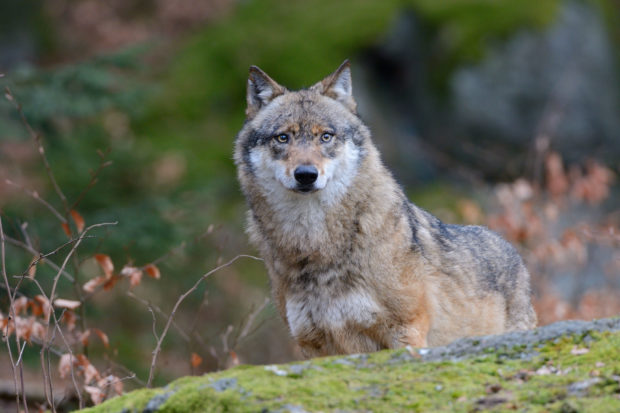
Killing wolves has consequences, not just for the animals but also for a majority of Americans and wildlife watchers who would rather enjoy the beauty of a living wolf than a dead trophy on the wall. Photo by Alamy
The disturbing trophy killing of an iconic wolf from Yellowstone National Park is a grim reminder that American carnivores are under serious threat, with the states they live in doing precious little to protect them and the U.S. House voting just this month to strip protections for them under the Endangered Species Act.
Spitfire, the Black Female, or simply 926F, was descended from the first group of wolves reintroduced into Yellowstone National Park from Alberta, Canada, 23 years ago. Her mother, “the most famous wolf in the world,” was a founding member and alpha female of the Lamar Canyon pack so popular among wolf-watchers, until she was killed by a trophy hunter in Wyoming in 2012.
After her mother’s death, Spitfire stepped in as the alpha female to hold the Lamar Canyon pack together. Until last week. Spitfire, like her mother, was protected within the boundaries of the Yellowstone National Park. But the minute she stepped over that invisible line, she became a target.
The states involved are doing nothing to protect wolves. In fact, they’re only too eager to give trophy hunters and trappers a chance to kill them once they have stepped outside protected areas. State-sanctioned wolf trophy hunts are perfectly legal in Montana, Wyoming and Idaho. Montana allows up to four wolves to be trophy hunted or trapped in two areas bordering the park that are designated for hunting. There are no quotas for other designated hunting areas around the park or the rest of the state, and 255 wolves were killed during the 2017-2018 season in Montana alone.
For its part, Wyoming just increased its quota in the areas surrounding Yellowstone and Grand Teton National Parks by 32 percent, to a record 58 wolves. In the remaining 83 percent of the state, any number of wolves can be killed in just about any manner, including trapping and hounding, at any time, without a license. Idaho has virtually no limits on how many wolves can be killed.
Killing wolves has consequences, not just for the animals but also for a majority of Americans and wildlife watchers who would rather enjoy the beauty of a living wolf than a dead trophy on the wall. Trophy hunting national park wolves reduces visitors’ sightings. One 2016 study showed that wolf sightings in Yellowstone increased by 45 percent in years following no hunting of a wolf from a park pack and current research shows that killing park wolves can have a negative effect on pack persistence and reproduction.
Wolf- and grizzly-bear-watching tourism drives more than $1 billion in annual revenues to Idaho, Montana and Wyoming, supporting thousands of jobs. According to a report by the U.S. Fish and Wildlife Service, wildlife watchers outspent hunters in 2016 by a ratio of nearly 3 to 1.
The overall situation could soon get worse, as wolves in other states could face the same threats. In recent years, we have seen well over 100 attacks to wolves and the Endangered Species Act and only two weeks ago, the U.S. House of Representatives passed a bill, H.R. 6784, that strips all federal protections for gray wolves in the continental United States. The bill would also bar the public from seeking redress through our federal court system.
We believe that language identical to H.R. 6784 is also at risk of being included in the Fiscal Year 2019 appropriations bill for the Department of the Interior.
You can help. Please make brief, polite phone calls to your two U.S. Senators and one U.S. Representative and ask them to ensure that the final FY19 spending package does not contain harmful provisions that undermine the Endangered Species Act, such as delisting gray wolves. These beleaguered American carnivores need us to stand up for them now, more than ever.
The post A trophy hunter kills a beloved Yellowstone wolf, even as attacks on wolves in Congress intensify appeared first on A Humane Nation.
Enviroshop is maintained by dedicated NetSys Interactive Inc. owners & employees who generously contribute their time to maintenance & editing, web design, custom programming, & website hosting for Enviroshop.
